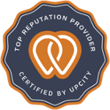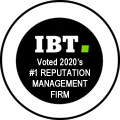Ranking Google Social Search Results
Bill Slawski, February 14, 2013
Linkbuilding isn't dead, and it likely won't be any time soon, but it has changed over the past few years, and the search engines are looking at other signals as well, such as social sharing...
Less Reliance on Links
If you look through the links that you might have attracted or acquired for your website in the past, you might see directories that may no longer have much value. You visit their home page and notice that it either the directory no longer exists, or that its home page is showing a zero PageRank in the Google Toolbar.
You may see links from pages that linked to you previously that aren't online as well because the site closed, or it moved to a new domain, or it removed resource pages or blog posts that might have linked to you.
The Web is in a constant state of churn, and sites come and go. Many directories that existed in the past targeted people interested in building links to their pages more than building directories that help people find pages and information on the Web.
Google used to tell people in their Webmaster Guidelines to use sources like directories to tell other people about their sites, but that was removed from the guidelines a while ago. Google seems to have cracked down on directories and other resources that were aimed specifically at helping pages rank higher in Google's search results.
Google's page on Link Schemes explicitly warns people against such directories as well, telling people that "Low-quality directory or bookmark site links" are unnatural links that violate Google's guidelines.
There has been a lot of discussion on the Web that "earning" or "attracting" links is the new linkbuilding, by creating great content that people value for the information it shares and the resources it provides. There's a lot of value in giving people information that they will find useful, in presenting it in a way that engages, persuades, and inspires people to share it with others through social sites, through links and referrals, by email, and in other ways.
That's really nothing new and maybe even goes back to the days before we had sites like Google or Bing or even Altavista.
Social Annotations in Search Results
Both Google and Facebook have been getting more social, and if you perform a search at Google while logged into your Google Account, you'll see annotations from people you've connected to on Google Plus regarding whether or not they've shared pages appearing in search results.
If you log into your Facebook account and search at Bing, you'll also see annotations from people you're connected to about whether or not they've liked certain pages.
 A social search result with an annotation.
A social search result with an annotation.
Google is experimenting with how they display annotations from social sources. The result pictured above is in Google's top ten results (for me), and it was shared on Google Plus by Webimax. Because of my social connection to Webimax, a link to the page appears in relevant search results on a query that I performed for [seo 404 errors] (ignore the brackets).
Without the page having been shared by an account that I'm connected to on Google Plus, it might not have ranked as highly in search results. While that result has acquired some PageRank, and it's relevant for my query, it appears in part because of our social connection.
Google has been performing experiments with this kind of social connection, and they shared a whitepaper publicly that discusses some of the experiments they've been performing. In May of 2012, the paper Social Annotations in Web Search (pdf) was published at the CHI 12 conference in Austin, Texas. Its authors include Aditi Muralidharan of UC Berkeley, and Zoltan Gyongyi and Ed H. Chi, both from Google.
The paper explores the topic of how best to present socially shared documents in search results. Note that my result displayed above doesn't have a small image under it like socially shared results used to in the past, and are shown to be presented in the research paper. The intro to the paper tells us of three major points:
- First, only certain social contacts are useful sources of information, depending on the search topic.
- Second, faces lose their well-documented power to draw attention when rendered small as part of a social search result annotation.
- Third, and perhaps most surprisingly, social annotations go largely unnoticed by users in general due to selective, structured visual parsing behaviors specific to search result pages.
Muting Social Results by Person/Publisher?
Google also published a patent application last week that involves social annotations in search results as well. The filing would enable searchers to decide whether or not they wanted to see pages from specific friends or connections at social networks in the search results they received. They would be able to "mute" results from people or companies of their choosing. The patent is:
Filtering Social Search Results
Invented by Matthew E. Kulick, Adam D. Bursey, and Maureen Heymans
Assigned to Google
US Patent Application 20130036109
Published February 7, 2013
Filed: August 5, 2011
Abstract
This specification describes technologies relating to searching. In general, aspects of the subject matter described in this specification can be embodied in methods that include the actions of:
- Receiving a search query from a user of a search service,
- Identifying search results including general search results responsive to the search query and social search results associated with content generated by one or more members of a user social graph associated with the user that are responsive to the search query, the search results corresponding to digital content stored in one or more computer-readable storage media,
- Determining that a first social search result is associated with a first muted member that is a member of the user social graph,
- Generating filtered search results in response to determining that the social search result is associated with the first muted member, and
Providing the filtered search results for display to the user.
What the Patent Tells Us About Social Signals
In addition to the information that a patent contains, it can be really helpful to look at some of the assumptions and implications it might hold. Here are some points and take aways to consider:
Point: People are likely to give more weight to search results from people they know, including reviews and opinions. Sometimes though, those social results can include information that they really don't find value in.
Take Away: When you share something on a social site such as Google Plus, think about how much value it may actually provide to searchers who might see it as a socially shared search result. If people come to value the things you share, it's more likely that they won't mute your results (and they can't yet, but might be able to in the future). It's also likely that more people will actually follow you on that social network as well.
Point: When someone sees your annotation in social search results, they can use it to go back to your profile. A profile not only acts to indicate that you are connected through a social network, but also to enable people to verify what they might know about you.
Take Away: Spend time on your social profiles, making them interesting and engaging, and credible. Doing so can also have the benefit of attracting more people to add you on those networks as well.
Point: The patent discusses the possibility of multiple interconnected social networks being involved in an analysis like this, including people you might chat with, or email to, or connections you've made in specific social networking services. Connections might also be considered based upon blogs or feeds that you've subscribed to, or sites that you've become a member of. Your connections in social networks may also have connections who might be shown your content in a social search result as well.
Take Away: We do know that Google is showing results from people whom we are directly connected to in Google Plus at this point, but there is a possibility that they could broaden the connections that they do show. It would make sense for them to do that in conjuntion with a feature that would allow people to mute some of the connections they are shown.
Point: A social graph might be more than just the people you are connected to. It might include "friends" of people you are connected to, sites and resources that are linked to from their profiles, and more. This could be governed by a number of degrees of separation, but if you connect directly to someone, you might be connecting to some of their connections as well.
Take Away: There's value in connecting to others as an individual or as a business to make the connection itself and work towards building a relationship with them. You may start seeing social results from people they are connected to as well.
Point: Google might decide that the connections you make, and the degree of separation at which their content might show up in social results, or at which your content might show up in their search results might involve other actions, including a frequency of interaction. This can include how often you visit a specific social network, how frequently you endorse or click on items shown by friends, and more. This might be a dynamic feature, and could change over time.
Take Away: If you're going to share something or endorse something through a social network, choose things that your audience is likely to be interested in, and may visit the pages, pictures, and videos that you share or endorse. If you choose things that doesn't appeal to that audience, your social shared items can reach a smaller audience. If the muting feature described in this patent is put in place, more people may mute your results as well.
Point: The patent provides a laundry list of the kinds of content that might potentially be shared on a social network, and it includes: "local reviews (e.g., for restaurants or services), video reviews and ratings, product reviews, book reviews, blog comments, news comments, maps, public web annotations, public documents, streaming updates, photos and photo albums. Thus, the content can include both content generated by the members of the user's social graph, as well as content endorsed or reviewed by the members of the user's social graph."
Take Away: I've seen many social profiles that limit the kinds of things they share about themselves and their business, or include a limited number of resources. If you broaden what you include to share things that people who are interested in you might also find interest in (and that you find interest in), you broaden the potential range of socially annotated results that you might be seen for.
Be careful though, spamming people through social sharing might be a quick way of getting removed as a connection at present, and if the kind of muting described in the patent is implemented, it might get you muted.
Ranking in Social Results
The patent does provide some details about how social signals might be ranked in search results. It's hard to tell how strong these signals might be today, or if there might be others that aren't included in the description of the patent. But they seem like good things to keep in mind.
The following screenshot from the patent looks at some of the sources of signals that might be used in ranking social search results:
 Sources of potential social signals
Sources of potential social signals
Affinity based signals, which can include:
- How a friend is connected to the user (directly on a social network, through a blog subscription, as an email connection, etc.)
- Which social networking site the friend is a member of
- Whether friend or friend of friend
- How many paths to get to the friend of a friend (e.g., common middle friends)
- How frequently someone clicks on posts by a particular contact
- Leaving comments on a contact's posts can result in higher affinity than occasional endorsements
Other ranking signals:
- An information retrieval score of content for a query
- Content type (e.g., blogs versus images)
- Date of the associated content
- If content was originally shared with a smaller group of friends, including you, rather than everybody
- The number of friends who might have endorsed or shared a resource
- A close affinity to someone who endorsed a resource
- The type of endorsement made by someone you might be related to (starred results, visited the resource, left a comment on it, etc.)
- Based upon authorship of a resource, and a relationship with that author
- This is the first extended set of signals that I've seen from Google that describe how social search results might be ranked. It's quite possible that some of these may be in use at present, some might be things that could be added or ignored, and other signals could be included as well.
These signals do make a lot of sense if the goal of social search is to surface things that are fresh and from people who you value the opinion of.
The patent does include some more details, and some examples that might be worth looking at as well. Definitely take a look or ask if there's something you're interested in.
Conclusion
Google's invested a lot of time, energy, and resources towards using social signals to make content available from people we may be connected to in social settings. We know that Google is exploring other signals as well, such as using knowledge bases to provide richer results. That's likely a good topic for a future post.
Regardless of whether or not Google provides us with the ability to mute certain people from showing up in social search results, social annotations are capable of providing searchers with information about relevant results that include pages and content that they might not see based solely upon PageRank and relevance signals alone.





